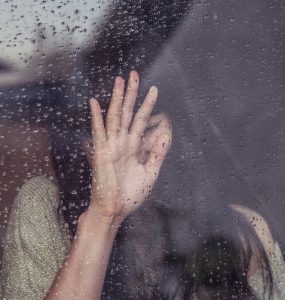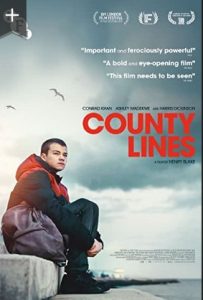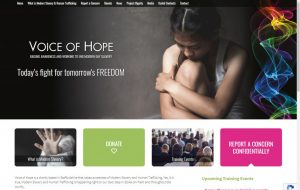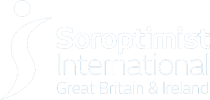SI Midland Chase President-Elect Judith Carder will take modern slavery as the theme for her year in 2021-2. It’s also a subject that fits within our current Presidential theme of Mind The Gap. Judith recently arranged an excellent short training course for SIMC members delivered by Voice of Hope a Stoke on Trent based charity raising awareness of, and working to end modern slavery. It’s summarised here…
Modern slavery is an incredibly wide ranging and extensive issue – shockingly so. It comprises Modern Slavery, Human Trafficking and County Lines.
In 1833 when slavery was finally abolished in the British Empire, it was estimated that there were 18 million slaves worldwide. The latest figure today is between 43 and 47 million – more than 2.5 times as many – people worldwide are estimated to be in some form of slavery. Source:ILO
But is it really as bad as that? People often ask…Because the challenge is that we aren’t aware of the extent and scale of the problem. It’s not immediately visible to us.
Slavery is organized crime on a scale second only to that of the illegal arms trade. The economic cost in the UK – estimated at the end of 2017 – was between £3.3 and £4.3 billion. The physical and emotional costs to the individual victims are the biggest components of this.
So how can we become more aware of this issue and of our potential contribution to it?
How many slaves work for you?
In other words, what’s your slavery footprint? Take the survey here – you might be very unpleasantly surprised.
 Statistics show that nine million new slaves are created each year. That’s one new slave every four seconds – day in, day out.
Statistics show that nine million new slaves are created each year. That’s one new slave every four seconds – day in, day out.
66% of these (around 30 million people) are to be found in Asia, where five countries are the worst offenders, namely India, China, Pakistan, Bangladesh, and Uzbekistan. Slaves are found in factories, on construction sites, in domestic service, in the sex trade, and in fishing. But it’s on our doorsteps here too!
Generally speaking 75% of slaves are engaged in forced labour of some description, while the balance are involved in the sex trade. Given the high proportion in forced labour, manufacturing supply chains are absolutely critical to controlling and reducing modern slavery. Thus the business sector is critical to helping identify and solve the problem.
So our challenge as individuals is to be much more aware of what the issue is and where it might exist.
Voice of Hope uses the maxim that “The eye doesn’t see, what the mind doesn’t know”. And that probably applies to most of us in the matter of modern slavery. We need to educate ourselves.
The excellent training course delivered by Voice of Hope had five elements:-
- What is modern slavery?
- Why does it exist?
- What form does it take?
- What are its indicators – how do we recognize it?
- How should we respond?
What is modern slavery?
The simplest and clearest definition is that it is “the illegal trade of exploiting people for profit.”
In addition, the UK government defines it as: “The recruitment, movement, harbouring or receiving of children, women or men through the use of force, coercion, abuse of vulnerability, deception or other means for the purpose of exploitation.”
Trafficking is the movement of people from one location to another from/into exploitative conditions.
In the UK The Modern Slavery Act 2015, chapter 30, created the role of an antislavery commissioner and aimed to do three things primarily:
- Provide clarity to the police and other law enforcement agencies around definitions of modern slavery to enhance their ability to detect and prosecute cases
- Protect vulnerable victims of slavery
- Make large businesses (Turnover >£36m pa) much more accountable for their supply chains, including having to publish Modern Slavery Statements
We also discussed the AMP model (Act Means and Purpose) which provides the basis of the definition of a case for the police. In other words, what’s going on? How is it happening? and why is it happening?
Why are people trafficked?
For profit. People trafficking is a high profit, low risk criminal activity that relies on a high degree of mobility, and ease of movement from location to location. It’s all based on supply and demand – whether that’s for drugs, sex, firearms or any other “mobile” commodity. It’s estimated that people trafficking realizes around £150 billion pounds profit annually as an indicator of scale.
You would have to combine the annual profits of four of the largest global companies – Microsoft, Apple, Google, and Starbucks – in order to arrive at that £150 billion.
So, why does modern slavery happen? There are both pull and push factors.
People are pushed into slavery for a wide range of reasons.
Lack of jobs, poverty, lack of their basic human needs being met (Maslow’s Hierarchy), environmental disasters, overcrowding, war, oppression, and general economic issues.
People are pulled into slavery because they can see a better life elsewhere. For example, better economic opportunities, improved standards of living, a peaceful existence, a place where diversity is encouraged and there is a high degree of tolerance, and they may already have family in situ.
 What are the categories of modern slavery?
What are the categories of modern slavery?
- Sexual exploitation of any kind. Around 35% of all cases in the UK fall into this heading, 26% of cases in Staffordshire.
- Domestic servitude – often involving minors – 26% of cases.
- Forced labour e.g. food production, factories, car washes, agriculture, construction and tarmacking, 78% of all cases in Staffordshire revolve around enforced labour.
- Criminal exploitation such as cannabis farming, involvement in county lines, begging, illegal adoption, identity theft, sham marriages and organ harvesting. 25% of cases in Staffordshire relate to criminal exploitation.
County Lines
Police contacts say that county lines are “overrunning the area” in Staffordshire. This is the trafficking of drugs and firearms from cities into rural areas, often carried out by children, who are induced to act through “gifts” such as designer wear, trainers, the latest technology etc. This ultimately leads to debt bondage, intimidation, violence, and grooming to the extent that they cannot escape working for the county line.
It’s estimated that in the UK, we have over 1,000 different county lines in operation. The estimated profit per line is £800,000 per year giving an overall total of over £800 million.
 The 2019 film “County Lines” which you may choose to watch, is the story of a 14-year-old-boy who is groomed into a criminal network which involves drug smuggling… and gives a horrifying insight into this world.
The 2019 film “County Lines” which you may choose to watch, is the story of a 14-year-old-boy who is groomed into a criminal network which involves drug smuggling… and gives a horrifying insight into this world.
In the UK people who are most trafficked in general terms are firstly UK nationals, then Albanian and Vietnamese nationals. In the case of County Lines it’s mainly UK nationals – usually children and minors.
The “industry” revolves around the recruitment of vulnerable people, and the dark web is a key actor in this. In addition, job ads, Jobcentre Plus, prisons, word of mouth, family, food banks, churches, hospitals, and rehab centres have been infiltrated by people preying on vulnerable people who perceive they have no other options to survive. Children are particularly targeted from orphanages, out of care, or by their own relatives. They can be coerced by friends acting under duress, and through grooming.
There is no typical victim profile, except to say that all the victims of modern slavery are vulnerable in some way.
What are the indicators of victims involved in modern slavery?
- They may be fearful of authority of any kind
- There are sign that they are being controlled
- They have often been recruited with false promises
- There are often language barriers
- They may say they are just visiting but they don’t know their address or the address of the place they work
- There may be children around who are not at school
- They have little self-determination or control over their own lives
- There may be high security measures in the places where they are living. For example, locks on the outside of doors,
- They receive no, or minimum pay
- They work very long hours
- They have poor physical and mental health and possibly an unkempt appearance
- They are often working without the appropriate PPE e.g. car washes
- They may be tattooed or branded
- They live in high density, multi occupancy housing
In other words they are hidden in plain sight.
We also looked at a complex case study called “Concrete” based on the AMP model which looks at modern slavery in the UK construction sector. It’s well worth a watch.
Voice of Hope also quoted some items recently in the news in the Staffordshire area. For example, a slavery ring where 400 people were working for fifty pence a day, but it took six years to bring it to court owing to the complexity of the relationships in the case. Secondly a former Woolworths store in Longton Stoke-on-Trent which had been used as a drugs factory with value output of £2.6 million and over 2,647 cannabis plants. Almost as soon as it was closed down, it reopened “under new management”!
In Staffordshire 78 crimes of Modern Slavery were recorded between 1st December 2019 and 30th November 2020. This was 5% up on the previous year. Staffordshire police are dealing with over 500 ongoing cases, and labour exploitation and human trafficking are represented in 78% of those. 22% are concerned with sexual exploitation, and 26% with criminal exploitation. In terms of gender, 62% of victims are male and 28% are female. Victims are often subjected to multiple types of exploitation.
How should we respond if we suspect modern slavery?
If you perceive that someone’s in immediate physical danger, you should dial 999.
Outside of that there are two pathways:
First responders are official government agencies and nominated charities such as the Salvation Army, NSPCC and Barnardos – they have their own processes and procedures.
But we are not first responders, we are members of the public. Interestingly the NHS is not a first responder either because of patient confidentiality and it’s worth bearing that in mind.
But if you’re a second responder, you might want to start by asking “Who is my safeguarding head?”
In an organization like SIGBI, we have a clear safeguarding policy and procedure. So that’s one option. And then what is the procedure for reporting concerns? Well, you can call 101 and report it or alternatively, you can contact an anti-slavery organization, such as Voice of Hope, and report a concern that way.
 If you go onto the Voice of Hope website you will see that there is a large pink button which is an easy to use form where you can report a concern. You won’t be informed of its progress or outcome, it doesn’t work like that, but at least you have acted and raised the concern with the appropriate agencies. There are also other options like the UnseenUK app and The Clewer Initiative’s car wash app.
If you go onto the Voice of Hope website you will see that there is a large pink button which is an easy to use form where you can report a concern. You won’t be informed of its progress or outcome, it doesn’t work like that, but at least you have acted and raised the concern with the appropriate agencies. There are also other options like the UnseenUK app and The Clewer Initiative’s car wash app.
Finally Voice of Hope described “The Big Dream”. Voice of Hope is one of the group of organisations hoping to create a centre of excellence in Staffordshire whose aim will be to create a hub to bring together all the agencies and parties to assist modern slaves escape from their servitude.
Twitter: @VoHStaffs
Facebook: @VoiceofHopeStaffs

